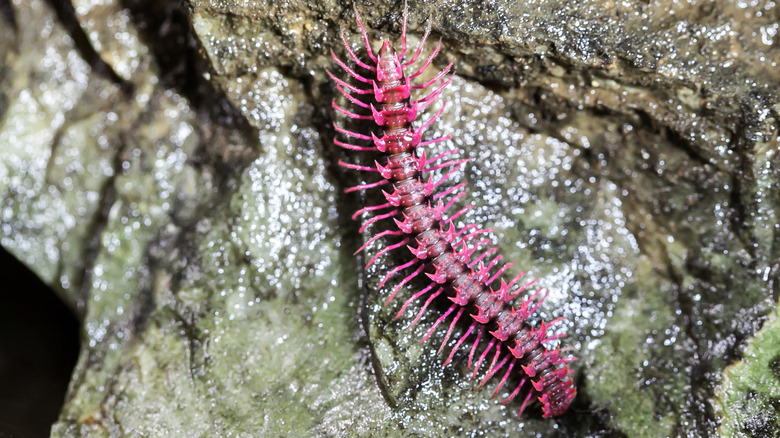These Two New Dragon-Like Species Have Been Discovered In Thailand
A team of researchers was doing fieldwork investigation around Pha Daeng Cave in Thailand in 2024. Their specific mission was to research wildlife in that area. On a rock they found two dragon millipedes mating. Upon closer inspection, though, they realized these were not one of the known species of dragon millipede. This was a brand new species.
The researchers' findings were published in the Tropical Natural History journal in 2025 under the title "Integrative Taxonomy Reveals Two New Dragon Millipede Species in the Genus DesmoxytesChamberlin, 1923 from Thailand (Diplopoda: Polydesmida: Paradoxosomatidae)." In it, they describe this new dragon millipede species as being about an inch in length, with long legs and spike structures on each of its 20 body segments. Its appearance can call to mind certain depictions of dragons as slender, serpent-like, and with protruding spikes or spines along their backs.
This new species has been named the princess dragon millipede. The name is in honor of Her Royal Highness Princess Maha Chakri Sirindhorn of Thailand due to her support and contributions to the field of environmental research and protection. Though it may not have the 1,300 terrifying legs the Eumillipes Persephone millipede does, it opens up a new door for further scientific exploration of the area and a greater understanding of this genus.
Discovery of the princess dragon millipede of Thailand
Scientific research into dragon millipedes has classified them into eight groups with 84 known species, with many new species having been discovered in just the past few years. Researchers use both the physical appearance and genetic data to differentiate the various species and analyze how they are related. Advancements in genetic research have been key to new scientific discoveries, which is also the case when it comes to the new model for species evolution based on lizard genetics.
Researchers photographed these creatures and utilized powerful microscopes and gold-coated samples to capture detailed images of the body structures. They then compared these features with those of previously known species to see how the new ones fit in. The team also extracted DNA from the millipedes' legs and body segments to analyze their genetics and confirm how closely related the new species are to others in the same group.
The researchers analyzed three genes from the millipedes to study their DNA and genetic relationships. They found that the two new dragon millipede species are genetically distinct from all previously known species, showing about a 10 to 18% difference in their DNA. Using advanced genetic analysis tools, scientists built a family tree that grouped each species into its own branch, confirming they share a common ancestor but have evolved separately.
Future research for the new millipede species
So far, the princess dragon millipede has only been observed in that particular cave in northern Thailand, as it seems to only live in the humid limestone environment this region supports. In fact, these millipedes were up on high rock surfaces that required the researchers to climb to reach them. However, the journal publication notes that further investigation should be done to see if this species is more widespread across Thailand.
The researchers note that while their analysis successfully confirmed the new dragon millipede species' places within the genus, it was based on only three genes. This limited genetic data might not fully capture the deeper evolutionary relationships among species. To build a clearer and more complete picture, the researchers remark that future research could include additional genetic markers or even study the millipedes' full mitochondrial genetic profile or complete genome.
The discovery of any new species is always an exciting one. It reminds us that there is plenty more to uncover and learn about our own planet — just like the rare mayfly insect thought to be extinct and recently rediscovered in Thailand. For now, the new princess dragon millipede will offer an exciting research pathway for scientists in Thailand.


